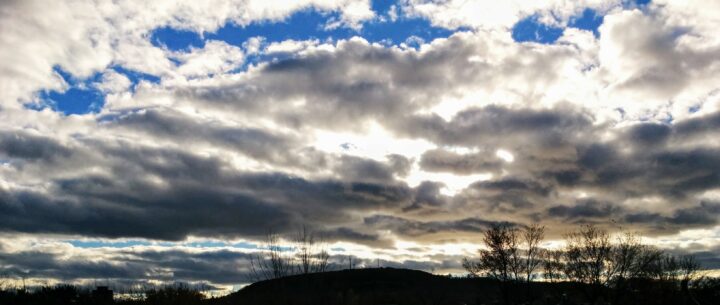Thirty years ago, in November 1986, we launched our very first issue of Montréal Serai. While commemorating this important milestone, we are proud to announce that Serai’s contribution to the promotion of literary arts has been recognized through the Quebec Writers’ Federation Judy Mappin Community Award (2016) presented recently to Rana Bose, a founding member of Serai.

#montroyal credit: Prasun Lala
In these past 30 years, we have moved from a print-based community magazine to a digital quarterly showcasing fiction, poetry, critical essays, interviews, reviews and media arts from Québec, Canada, and the international community. Starting from this issue, our website has a new look to enhance its visual appeal and showcase its contributors’ photos and artwork more effectively. We are also continuing to take a more dynamic approach to uploading new articles at staggered intervals. We look forward to your feedback and suggestions. Write to us at talkback@montrealserai.com.
In keeping with our vision of bringing the margins to the centre, we are planning to engage young, student writers through a new section that will be introduced in our next issue (March 2017). More information on this will be posted early in the New Year.
The theme of this issue is drawn from a quote from Ralph Blum’s The Book of Runes. Runes are the thousand-year-old letters forming runic alphabets – the first system of writing developed and used by Germanic peoples before the adoption of the Latin alphabet.[i] Individual runes were associated with symbolic properties or powers, which could be invoked by writing them. The word rune meant both letter and secret or mystery. According to one source, its original meaning might have been a “simple (hushed) message.” [ii]
Blum’s quote reflects on what we can learn from constraint, hardship and other causes of human sorrow, pain and limitation:
“When something within us is disowned, that which is disowned wreaks havoc. A cleansing is required here; in undertaking it you fund a will and strengthen character.” [iii]
The disownment or casting away of what was once one’s own is heart-wrenching – but equally brutal can be the task of owning it back. We have, in this issue, an extraordinary range of articles covering indigenous and migrant stories, our lost rights to human dignity, a sudden end to childhood, and the powerful means of taking back the disowned through murals, poems, storytelling and performing arts.
Claudia Itzkowich Schñadower, in her interview with Mexican filmmakers Luis Ernesto Nava and Keisdo Shimabukuro, writes about the stories on walls sketched by migrants escaping from poverty and violence. Joyce Valbuena and Giuliana Fumagalli recount the experiences of Inti Naxhiellii Barrios – a storyteller, performance artist and artistic advisor of Le bloc d’artistes of the Immigrant Workers Centre in Montréal – who travelled to the Philippines in 2016 as part of the Solidarity in Performance Art (SIPA) project. Marie Thérèse Blanc reflects on Leonard Cohen, the author and songwriter who “disowned nothing,” and who, through being “unaffectedly honest about his warts and failings,” revealed “rare, gentle grace and elegance that defeated ego or pretence.” Louise Carson offers up a blistering end-of-love poem in “Burning.” Tamara Nazywalskyj, in her story “Fourteen Days of God’s Speech,” looks for the elusive peace and happiness arising from her conversations with God. Astha Agarwal, in her poem “Durga,” tries to ‘re-own’ her childhood.
Featured book reviews probe the hidden depths, from Laurie D. Graham’s Settler Education, Liam Durcan’s The Measure of Darkness, Mayank Bhatt’s Belief, and Donald F. Mulcahy’s A Second Coming, Canadian Migration Fiction, to Louise Carson’s book of poetry, A Clearing.
Films reviewed here explore other “unowned territory”: Lia Tarachansky’s On the Side of the Road, and Paolo Zaffaina’s Article 4, a short film from Italy about the never-addressed-or-upheld legal and constitutional citizen right to a decent wage.
Look for more articles in the coming weeks as we edge our way through the season of the longest nights.
[i] https://en.wikipedia.org/wiki/Runes
[ii] http://norse-mythology.org/runes/
MacLeod, Mindy, and Bernard Mees. 2006. Runic Amulets and Magic Objects. p. 4-5.
[iii] Ralph Blum, The Book of Runes, A Handbook for the Use of an Ancient Oracle (https://archive.org/details/The-Book-of-Runes) See pp. 80-81, Nauthiz: Constraint, Necessity, Pain.

#mtl credit: Prasun Lala